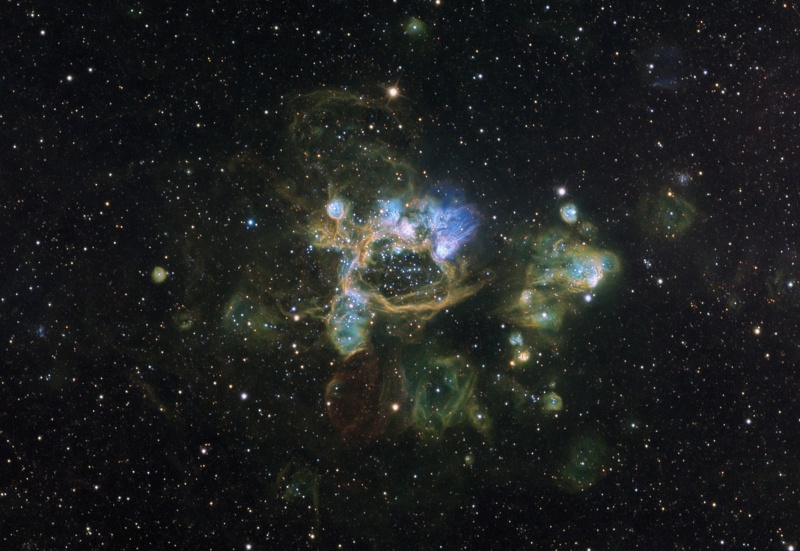Credit: Don Goldman,
Macedon Ranges Observatory
Explanation:
A truly giant complex of
emission
nebulae, N44 is about 1,000 light-years across.
It shines in southern skies as a denizen of our neighboring galaxy,
the Large Magellanic Cloud, 170,000
light-years away.
Winds and intense radiation from hot,
young, luminous stars in N44 excite and sculpt filaments
and streamers of the
glowing nebular gas.
But supernovae -
the death explosions of the massive short lived
stars - have also likely contributed to the region's enormous,
blown-out shapes.
The cluster of young stars seen near the center lies in
a superbubble nearly 250 light-years across.
This detailed, false-color view of the
intricate structures
codes emission from hydrogen, oxygen, and sulfur in shades
of blue and green.
1999 2000 2001 2002 2003 2004 2005 2006 2007 2008 |
Январь Февраль Март Апрель Май Июнь Июль Август Сентябрь Октябрь Ноябрь Декабрь |
NASA Web Site Statements, Warnings, and Disclaimers
NASA Official: Jay Norris. Specific rights apply.
A service of: LHEA at NASA / GSFC
& Michigan Tech. U.
|
Публикации с ключевыми словами:
LMC - emission nebula - БМО - эмиссионная туманность
Публикации со словами: LMC - emission nebula - БМО - эмиссионная туманность | |
См. также:
Все публикации на ту же тему >> | |
